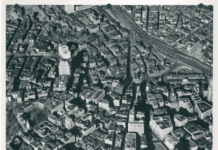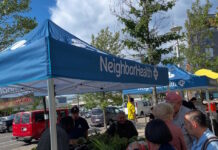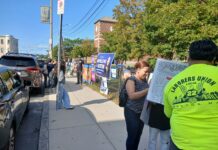by MIKE FREEDBERG
SPECIAL TO EASTBOSTON.COM
For two years now, the Boston Planning and Development Agency (BPDA) and once known as the Boston Redevelopment Authority has been working on what it calls “PLAN East Boston” whereby the entire neighborhood will be re-zoned, re-designed, re-shaped, and maybe re-configured. Needless to say, PLAN East Boston is ambitious.
Many residents will almost certainly not like these proposals.
Enough is already known of what will be released in “early November” to cause much consternation among residents of a neighborhood already beset with over-development that has drastically altered its long-standing, immigrant character.
What had, since the 19th century, been a low-cost neighborhood for large families without much money has, since 2000, become ever more a destination spot for very highly-paid singles employed by the region’s life sciences and higher education industries. Rents that used to charge less than $250 a month – and much less than that as recently as 1970 – now average well over $2,500. The many developments of “luxury condos” that have gone up all over Eastie — and are still going up — command even higher rents: from $3,200 to as high as $4,500.
For everyone who has long lived in one of Boston’s most stable neighborhoods, this radical economic realignment disorients the mind, not to mention the family budget. It also reshapes the structural archetype. East Boston has long, long been home to flat-roofed, two story and three-story homes, with some smaller, peak roofed singles squeezed in between. They’re still here, but many are dwarfed by four- and five-story, nine-to 50-unit concrete and lumber boxes of minimal, friendless design. Take a walk down Maverick Street to fully understand the impact.
In any case, the issues of the moment concern residential density – a familiar annoyance, and some serious changes to two main East Boston streets, Bennington and Meridian. The “Plan” envisions construction of many more four and five story apartment blocks, including, apparently, such a block atop Orient Heights. The Baker administration and the legislature enacted policies to encourage housing construction near MBTA stations. Residents of the Heights to whom I have spoken are dead set against what the BPDA has in mind.
Needless to add, the rental rates for these block units displace immigrant East Boston. The standard for new construction rent right now runs from $2,500 for tiny studios to over $4,500 for full size apartments.
Parking is also an issue people always mention, frustrated at what appears, to residents, an absurdity. “The more units, the more cars,” resident Dodie Obermeier told EastBoston.com at Saturday’s McLean Park design session. Developers say, of course, that new residents tend not to bring cars; but even a few new cars in a vast block development mean yet more crowding of streets already jammed up with neighbors’ vehicles.
The car issue is further aggravated by the Plan’s proposal to decrease existing parking space.
You read that right: decrease existing parking.
The Plan for upper Meridian Street, for example, gives its in-town side parking over to a dedicated bus lane.

Neighbors along middle Bennington Street suggest that the PLAN East Boston will reduce their portion of Bennington to one traffic lane each way, the other lane becoming either a bus lane or a bike lane or both., “And where, if that happens, will the traffic go?” asks Ms. Obermeier. Richie Puopolo, who lives on Saratoga Street, thinks such a plan is “crazy. Makes no sense.”
Opposition to the Plan, as it stands now, isn’t limited to the few people who I approached for this story. The entire group of activists who rally to the “Stand Up for Eastie” rubric is opposed, to the density objectives and to the traffic changes.
“SUFE,” as the group’s acronym goes, includes people from all manner of ordinary political views. This makes sense. Everyone in the neighborhood is equally challenged by the Plan, no matter what he or she may think about elections local or national.
So, does the Plan, which was initiated by the Marty Walsh administration, have any chance of actually happening now that Michelle Wu occupies the mayor’s office? The ball is entirely in her court.
Yes, she has completely remade the seven-member Zoning Board of Appeals, the body charged with upholding the City’s zoning laws, and which neighborhood activists accuse of ignoring these laws as it grants “variances” to mostly all petitioners who seek them. Yet it’s not clear, so far, that the new membership – which includes David Aiken of East Boston as an alternate — will pursue a variance policy much different from the “variances for all” approach taken by Mayor Walsh’s Board members.
In any case, the Zoning Board of Appeals is not involved in the re-zoning plan at issue right now. The re-zoning being proposed amounts to an overall variance for the entire neighborhood, not just those sought by one developer for one project.
So, we will see: Mayor Wu can approve the BPDA plan, amend it, or set it aside entirely and begin again from zero. Hopefully, Wu will decide that a neighborhood that works, and has worked for a long, long time, should be allowed to seek its own future destiny on its own terms. Yet other realities make that outcome a long-odds bet.
Housing and traffic are on the climate and economic table now. Neighborhoods are only one player among many, much more moneyed, in these two games.
Mike Freedberg is editor and publisher of the blog, Here and Sphere. He is also a political consultant. He regularly contributes original, participatory content to EastBoston.com.
Posted October 30, 2022














